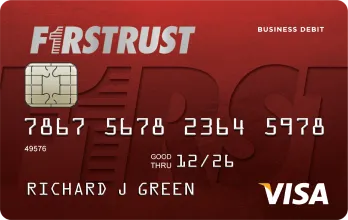It goes without saying that online and mobile banking make managing your finances extremely convenient. By using the Firstrust mobile app, you practically always have a branch in your pocket. But if you’re not taking the right precautions to keep your online banking account secure, this convenience can come at a big cost: your accounts may be compromised. To help prevent hackers and scammers from getting into your digital banking accounts, follow these tips:
Create secure online banking username and password
Most people know that a strong password is the key component of cyber safety, but the truth is, having a strong username is very important as well! By making an easy-to-guess username, you are giving away half of your online banking credentials from the start. Avoid using usernames that are any combination of your name. For example, if your name is ‘John Doe’, we do not recommend using ‘johndoe’, ‘jdoe’, ‘johnd’, or any similar combination.
On the other hand, having strong passwords is still very important! Strong passwords are a combination of the following recommended criteria: At least eight (8) characters in length, at least one lowercase and one uppercase letter, a number, and a special character (@#$%&?!). In addition, never use the same password for your online banking accounts that you use elsewhere. You should also avoid choosing your password based on easily obtainable information about you. For example: If you love the Eagles, your password should not be “Eagles2021!”.
Turn on activity alerts
Firstrust Bank’s online banking comes with extra security for our retail and commercial customers, one example being the security alerts! This feature gives you the control to set the activity notifications that best fit your needs. Using online and mobile banking, you are able to control whether or not you’d like to be notified about successful and unsuccessful login attempts, when the process of adding external accounts has been started, if someone used the “forgot password” function using your username, and much more! Firstrust also gives you the opportunity to create custom alerts based on account balances or transaction activity, history alerts, online transaction activity reports, and others.
Avoid public devices and wi-fi
As a reminder, never access your bank accounts on public devices or public Wi-Fi. Public devices and Wi-Fi can be easily compromised, contain spyware that steals your data, contain keyloggers that steal your credential, amongst many other harmful vulnerabilities. We highly encourage you to only access your Firstrust online banking accounts via a Wi-Fi or internet network that you know is secure or on your mobile device through the Firstrust mobile app using your phone service provider’s data.
Don’t fall for social engineering
You can have the strongest passwords, use Multi-factor Authentication (MFA), and be super diligent about the device and network you use to access online banking, but all that can be undermined with simple social engineering! Social engineering is when a hacker or scammer tricks you into giving up your credentials through a phishing email, a vishing call, or by other means. By impersonating someone of trust, like a Firstrust representative, these bad actors can manipulate you into sharing key information to gain access to your online banking account. Don’t be fooled, and remember that Firstrust Bank will never call you and ask you for your password.
Multi-Factor Authentication
Lastly, MFA, also referred to as 2-Factor Authentication (2FA), is enabled for all of our online banking users by default to increase account security. This step is designed to stop those who guessed your password or phished you for your credentials by sending you a one-time code to verify yourself. This method keeps your accounts extra secure as long as you keep your 2-Factor devices and email secure! This means, apply what you learned today for online banking account security to your 2-Factor Authentication devices/accounts.






































